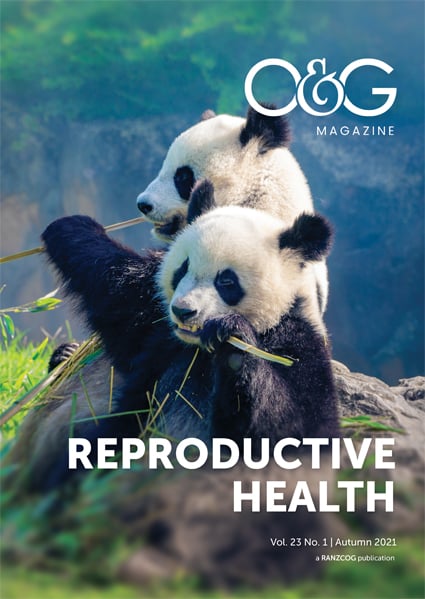How best can we define success in assisted reproductive treatment (ART)? This seemingly simple question has many answers, depending on the type of measurement used.
Outcomes of interest include clinical pregnancy rate (CPR), defined as ultrasound evidence of an intrauterine sac with or without a fetal heart, and live birth rate (LBR), defined as gestation more than 20 weeks or birth weight more than 400 grams, irrespective of multiple births.1 Furthermore, some studies call for more specific ART outcomes, such as birth emphasising a successful singleton at term.2
If we consider these outcomes as numerators, then there are various denominators that relate to different parts of the ART cycle.3 These include, per treatment cycle initiated (fresh or thaw), per oocyte pick-up (OPU), per embryo transfer (ET), and these can change the statistic reported, given that not all stimulation cycles result in either OPU or ET. Thus, changing the denominator can change the percentage.
The need for rigor in reporting is important for patient education, scientific analysis and regulatory processes. There have been international efforts to standardise reporting;4 however, data reported by the society for assisted reproductive technology (SART) in the US and the human fertilisation and embryology authority (HFEA) in the UK differ slightly. SART report on ‘live births per intended egg retrieval (all embryos transferred) yet, HFEA report ‘cumulative live birth event per egg collection’, subtly excluding those who do not reach OPU stage.5 As such, some authors argue that it is not possible to have one single best outcome measure, but that a ‘set of clear, relevant, outcome indicators’ may be more meaningful in empowering patients to make informed choices about fertility treatment.6
Measures of outcome in ART
The majority of reported outcomes may be called ‘surrogate outcomes’ and may be difficult for patients to interpret. This is due to many outcomes being reported and a variation in clinical practice between centres. Until recently, it was possible to select the most favourable outcomes and to use them for marketing purposes. This often results in misleading outcomes promoted on clinical websites, where it becomes difficult to estimate an individual patient’s chance of success. The very definition of success in IVF may differ between patients and service providers.
Overall, it is probable that a chance of live birth of a healthy baby at term per treatment cycle initiated (stimulated cycle) is the most meaningful and easily understood measure of IVF success.
Unfortunately, this seemingly straightforward statistic is not widely available and is difficult to estimate. Due to a diversity of variations inherent in IVF treatment, including different age profiles of patients, use of pre-implantation genetic screening (PGS), utilisation of a ‘freeze-all’ strategy, treatments from one stimulated cycle being separated in time and increasing prevalence of IVF cycles that do not result in pregnancy outcomes (elective and medical oocyte freezing), coming up with an easily understood measure of IVF success that patients can relate to and make informed decisions about their treatment has proven elusive. Also, more than one baby can be born from one stimulated cycle and these births can be separated in time, often by years, which adds another layer of complexity.
ANZARD ART database
Every ART and donor insemination cycle performed in our two countries is recorded in the Australian and New Zealand assisted reproduction database (ANZARD).7 This data is publicly accessible and recorded through the following partnership’s, the National Perinatal Epidemiology and Statistics Unit of the University of New South Wales and the Fertility Society of Australia and New Zealand.
The most recent ANZARD report published in 2020 reported 2018 data.8 In 2018, the number of initiated ART cycles was 84,064. These initiated ART cycles were further differentiated into autologous (own eggs) cycles, either fresh or thaw, oocyte recipient, embryo recipient, oocyte donation, gamete intra-fallopian tube transfer, surrogacy arrangement cycles, commissioning or gestational carrier cycles.
The number of clinical pregnancies was 19,514, giving a CPR of 23.2%. The number of live births was 15,475, thus calculating a LBR of 18.4% per initiated ART cycle. The number of live born babies was 15,980, with a multiple birth rate of 3.2%. The number of live born singletons at term (gestational age of 37–41 weeks) with a normal birth weight (more than 2,500 grams) was 13,018, which was 80.2% of live born babies. Furthermore, ANZARD records multiple patient characteristics (Table 1).
In 2018, of all initiated autologous fresh cycles (48,048), there were 92.8% cycles with an OPU (44,569), 49.3% cycles with a fresh ET (23,704), and after excluding 28.1% freeze-all cycles (13,520), there were 7399 clinical pregnancies and 5799 live births (16.8%).9 Furthermore, of 31,024 initiated autologous thaw cycles, 96.7% had a frozen ET (30,015) with 11,041 clinical pregnancies and 8,827 live births (28.5%).10
Table 1. ART patient and cycle characteristics reported by ANZARD.
| ART patient and cycle characteristics reported by ANZARD | |
| Female age | By year range of <30, 30–34, 35–39, 40–44 or ≥ 45 years. |
| Male age | Also reported by the same range, or listed as not stated or no partner involved. |
| Parity | Nulliparous, parous or not stated. |
| Cause of infertility | Male factor only, female factor only, combined male and female factors, unexplained, no cause, not stated or unknown. |
| Mode of fertilisation | Conventional in vitro fertilization (IVF) or intra-cytoplasmic sperm injection (ICSI). |
| Number of embryos transferred | One, two, three or more embryos transferred. |
| Stage of embryo transfer | Day 2–4 cleavage stage embryos, or day 5–6 blastocyst. |
| Type of cryopreservation | Slow-freeze or vitrification. |
Cycle-specific success rates
Cycle-specific rates report the chance of a first live birth from one course of ovarian stimulation, followed by all fresh and frozen/thaw embryo transfers.11
ANZARD has now included cycle-specific success rates, with data following a recent cohort of women through consecutive ART treatment cycles.12 In 2016, 15,404 women were followed from their first fresh cycle through subsequent fresh and thaw cycles until 2018, or until they achieved a live birth. The cycle-specific live birth rate per initiated cycle for all women was 23.1% in their first cycle, and 11.6% in their eighth cycle.13
Cumulative live birth rates
Proponents of the cumulative live birth rate (CLBR) state that due to multiple reasons for freezing embryos (such as single embryo transfers or to enable PGS), the CLBR could provide a more meaningful measure than single fresh or frozen cycles, where CLBR informs the chance of at least one live birth after a given number of repeated complete ovarian stimulation cycles.14
In their study of ANZARD data from 2009–2012, Chambers et al defined conservative CLBR where women who discontinued ART treatment had no chance achieving LBR if they had continued treatment, and ‘optimal’ CLBR as the same chance as women who had continued treatment.15
Of the 56,652 women who underwent 120,930 complete treatment cycles, overall for all ages the CLBR was 32.7% (95% CI, 32.2–33.1%) for the first complete cycle, rising to conservative 54.3% (95% CI, 53.9–54.7%) and optimal 77.2% (95% CI, 76.5–77.9%) for the eighth cycle. CLBR increased with increasing number of cycles.16
The major limitations of CLBR, as noted by the authors, was that population estimates do not account for individual prognostic factors that affect a woman’s chance of ART success, including duration of infertility, body mass index, previous childbearing, and ovarian reserve.17
Guidelines for reporting ART results
In 2017, the reproductive technology accreditation committee (RTAC) of the FSA released a technical bulletin providing best practice guidelines in acceptable success rate advertising and information provision (Table 2).18
There have been recent studies assessing adherence to the guidelines, suggesting room exists for further improvement in reporting.19 Of note, the RTAC guideline 2017 states that standardised patient groups for the publication of ART success rates are currently in development.20
Table 2. Public information, communication and advertising Australian clinics.
| Public information, communication and advertising Australian clinics (adapted from FSA RTAC Technical Bulletin 2017) |
| Success rates should include: |
| 1. Age group used in ANZARD data (ie. <30; 30–34; 35–39; 40–44 and ≥ 45 years at the start of treatment), and not other ranges. |
| 2. Live birth rate (LBR) for fresh and frozen embryo transfers separately. |
| 3. Clarifying information: the time period data collected, and details of population group – IVF, ICSI, PGS/PGD or frozen FET, and age group. |
| 4. Cumulative success rates, provided their mode of calculation is explained in clear language. |
| 5. Qualifying statement of broad factors that affect success rates eg. age, weight, cause of infertility. |
| 6. Statement that not every treatment will result in an egg collection, an embryo transfer or embryos to freeze. |
| 7. Link to FSA Interpreting pregnancy rates: A consumer guide.21 |
| 8. Clarify the meaning of ‘clinical pregnancy’ and ‘live birth rate.’ |
| 9. Peer-reviewed scientific data. |
| 10. Clinical governance and compliance to Australian laws and regulations. |
The future
IVF is a dynamic field and significant changes have taken place over the past 10 years. These include transition to blastocyst transfer, improvements in the lab, vitrification, universal ultrasound guided ETs, wider utilisation of PGS, introduction of new medications and adoption of embryoscope incubators with the possibility of artificial intelligence use for embryo selection. These changes, which are ongoing, may produce significantly different results to the ones reported by ANZARD for 2018.
Given the increased focus on accurate reporting, a direction for the future would be for ANZARD data to be used to create an Australian and New Zealand app where women could input their specific parameters and it would calculate the chance of live birth per stimulation cycle initiated, with a range of possibilities. This may also estimate the anticipated number of eggs collected, number of useful embryos and chance of live birth per fresh or frozen ET. The SART in the USA already provide such an online calculator, the SART Patient Predictor, based on modelling of nearly 500,000 cycles from 320,000 women in the USA from 2006.22 Of note, the Australian ‘YourIVFSuccess’ website was recently launched on 15 February 2021, as a collaboration between the NPESU and the federal government, to provide independent information on all fertility units in Australia.23
Conclusions
Multiple measurements on the success and statistics of ART exist. Our aims should be to clarify reporting of these results, in a manner that is accessible and understandable for patients, whist also noting that an individual is not the average, and ensuring that sound medical advice is provided and clinical acumen applied to their particular circumstance.
Further reading
Goodman LK, Prentice LR, Chanati R, Farquhar C. Reporting assisted reproductive technology success rates on Australian and New Zealand fertility clinic websites. ANZJOG. 2020;60(1)135-40.
References
- Newman JE, Paul RC, Chambers GM. Assisted reproductive technology in Australia and New Zealand 2018. National Perinatal Epidemiology and Statistics Unit. 2020.
- Min JK, Breheny SA, MacLachlan V, Healy DL. What is the most relevant standard of success in assisted reproduction? The singleton, term gestation, live birth rate per cycle initiated: the BESST endpoint for assisted reproduction. Hum Reprod. 2004;19(1).3-7.
- Homer HA. Reporting IVF outcomes: The devil is in the detail. ANZJOG. 2020;60:(1).11-14.
- Wilkinson J, Roberts SA, Vail A. Developments in IVF warrant the adoption of new performance indicators for ART clinics, but do not justify the abandonment of patient-centred measures. Human Reproduction. 2017;32(6).1155-59.
- Wilkinson J, Roberts SA, Vail A. Developments in IVF warrant the adoption of new performance indicators for ART clinics, but do not justify the abandonment of patient-centred measures. Human Reproduction. 2017;32(6).1155-59.
- Wilkinson J, Roberts SA, Vail A. Developments in IVF warrant the adoption of new performance indicators for ART clinics, but do not justify the abandonment of patient-centred measures. Human Reproduction. 2017;32(6).1155-59.
- Newman JE, Paul RC, Chambers GM. Assisted reproductive technology in Australia and New Zealand 2018. National Perinatal Epidemiology and Statistics Unit. 2020.
- Newman JE, Paul RC, Chambers GM. Assisted reproductive technology in Australia and New Zealand 2018. National Perinatal Epidemiology and Statistics Unit. 2020.
- Newman JE, Paul RC, Chambers GM. Assisted reproductive technology in Australia and New Zealand 2018. National Perinatal Epidemiology and Statistics Unit. 2020.
- Newman JE, Paul RC, Chambers GM. Assisted reproductive technology in Australia and New Zealand 2018. National Perinatal Epidemiology and Statistics Unit. 2020.
- Chambers GM, Paul RC, Harris K, et al. Assisted reproductive technology in Australia and New Zealand:cumulative live birth rates as measures of success. Med J Aust. 2017;207(3).114-18.
- Newman JE, Paul RC, Chambers GM. Assisted reproductive technology in Australia and New Zealand 2018. National Perinatal Epidemiology and Statistics Unit. 2020.
- Newman JE, Paul RC, Chambers GM. Assisted reproductive technology in Australia and New Zealand 2018. National Perinatal Epidemiology and Statistics Unit. 2020.
- Chambers GM, Paul RC, Harris K, et al. Assisted reproductive technology in Australia and New Zealand:cumulative live birth rates as measures of success. Med J Aust. 2017;207(3).114-18.
- Chambers GM, Paul RC, Harris K, et al. Assisted reproductive technology in Australia and New Zealand:cumulative live birth rates as measures of success. Med J Aust. 2017;207(3).114-18.
- Chambers GM, Paul RC, Harris K, et al. Assisted reproductive technology in Australia and New Zealand:cumulative live birth rates as measures of success. Med J Aust. 2017;207(3).114-18.
- Chambers GM, Paul RC, Harris K, et al. Assisted reproductive technology in Australia and New Zealand:cumulative live birth rates as measures of success. Med J Aust. 2017;207(3).114-18.
- Reproductive Technology Accreditation Committee (RTAC) Technical Bulletin 7 Public information, communication and advertising Australian clinics, 2017.
- Hammarberg K, Prentice T, Purcell I, Johnson L. Quality of information about success rates provided on assisted reproductive technology clinic websites ANZJOG. 2018;58(3)330-34.
- Reproductive Technology Accreditation Committee (RTAC) Technical Bulletin 7 Public information, communication and advertising Australian clinics, 2017.
- How to choose an IVF clinic and understand success rates: Questions to ask when choosing an IVF clinic. Interpreting pregnancy rates: Access Australia Australia’s National Infertility Network A consumer guide 2015. Available from: www.fertilitysociety.com.au/wp-content/uploads/How-to-choose-an-IVF-clinic-and-understand-success-rates_ACCESS-1.pdf
- Society for Assisted Reproductive Technology (SART) Patient Predictor. 2000. Available from: www.sartcorsonline.com/Predictor/Patient/
- YourIVFSuccess website. NPESU and Australian Federal Government, launched 15/02/21. Available from: www.yourivfsuccess.com.au/






Leave a Reply